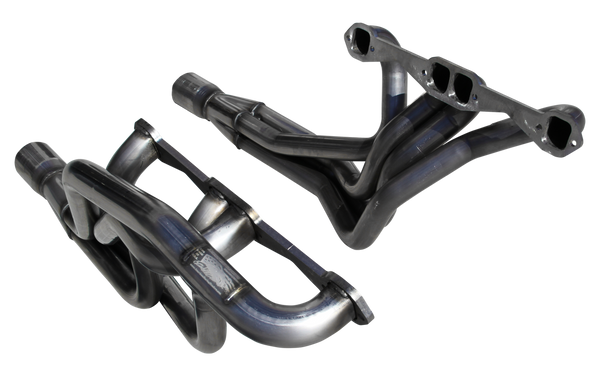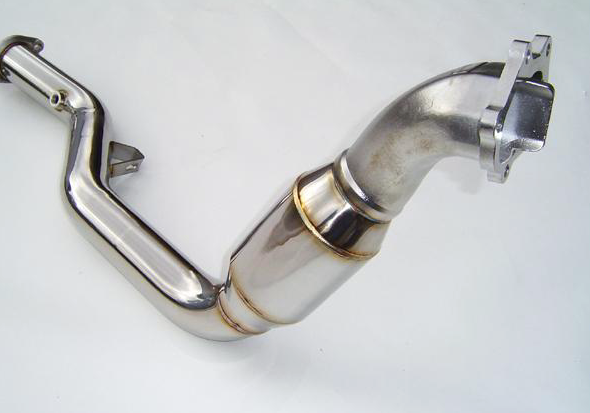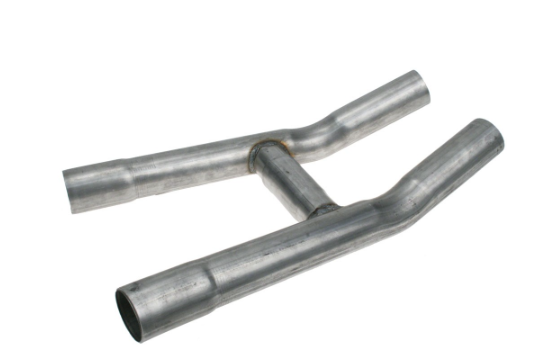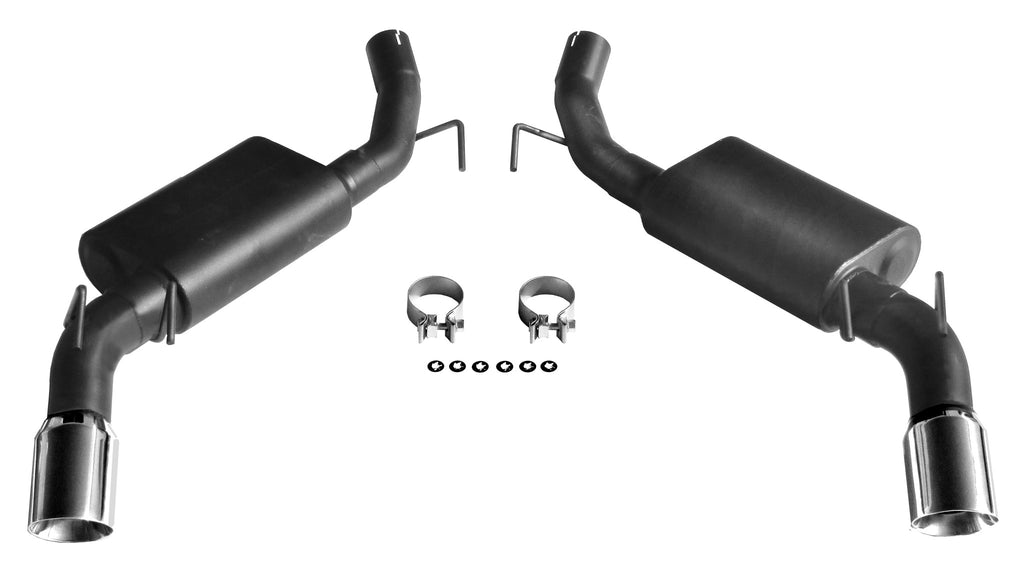
All the stuff you were afraid to ask – but really want to know.
So performance fans want to know: if I modify my exhaust system, how does each component affect the sound, performance and mileage of my vehicle? What follows is a cursory review of what these parts do in the scheme of things.
To begin here are the key components:
- Header / exhaust manifold
- Catalytic converter (on vehicles newer than 1975)
- Downpipe (not found with full length headers
- mid-pipe/X-pipe/H-pipe
- Cat-back exhaust kit / Axle-back exhaust kit
Headers:
Exhaust headers most commonly are a series of individual tubes that attach to a flange that bolts to the cylinder head replacing the more restrictive to air flow exhaust manifold generally installed by the original vehicle manufacturer. The tubes flow into a collector that merges the tubes into one large tube and attaches to the rest of the exhaust system
An aftermarket exhaust header can come in several forms; shorty, mid-length and long tube. Long tube headers generate the biggest horsepower increase of the bunch, shorty and mid-length headers delivering minimal power gains. Installing any header can cause an issue with regards to emissions and may not be legal in your location. Getting the correct primary tubing size header for your application is key to maximum power gains so asking an expert when you purchase is important.

Catalytic converter:
Introduced in 1975, this device was used to affect emissions output. “Cats,” as they are called, can utilize a variety of internal materials to reduce hydrocarbon and other toxic gasses. It is illegal to remove the cat from your exhaust or replace the original cat installed on your vehicle if it has less than 80,000 miles. Cats can be highly restrictive so many performance enthusiasts remove the cats, which render these vehicles out of emissions compliance.
Downpipe:
With older cars, the tubing that connects the exhaust manifold to the main section of exhaust that flows under the vehicle are called a Downpipe since is goes down under the vehicle. With new vehicles, a downpipe is the tube that connects the turbo exhaust tube to the main body of the exhaust that runs under the vehicle. Some manufacturers have generated significant gains from modification of the Downpipe design.

Mid-Pipe/X-Pipe/H-Pipe
The section of tubing that runs under the vehicle – either single exhaust or dual, is generally referred to as the Mid-pipe. Performance manufacturers have developed a number of Mid-pipe modifications that enhance both the power and sound generated by the entire exhaust system. An X-Pipe, where the two tubes of a dual exhaust cross in an “X” and blend exhaust flows is an X-Pipe and will create a higher pitched exhaust tone. In contrast, an H-Pipe features a connector tube that runs perpendicular to the mid-pipe and generates a lower tone. Both X and H Pipes are recommended for improved performance by exhaust experts by equalizing the pressure in the exhaust, side to side, which helps exhaust flow.
Mid-Pipe
X-Pipe
H-Pipe

Cat-Back/Axle Back Exhaust system
These components do exactly what their names imply. A Cat Back system bolts to the tubing that exits the catalytic converter and usually includes mufflers and some form of outlet tube. In many cases, the exhaust tip is attached to the end of the cat-back system. Axle Back systems bolt to the mid-pipe tubing as it passes over the rear axle of the vehicle. Both Cat Back and Axle back systems may attach to a natural break in the system or could require cutting the tubing as some point. In most cases, these kits use a clamp to fasten then in place but can also be welded if the customer requests. You might mention that many axle back systems have the mufflers in the section of the exhaust system back of the axle.
Cat-Back Exhaust

Axle-Back Exhaust

Final note:
There are different forms of stainless steel used today with aftermarket exhaust systems. All new cars use 409 stainless steel – as opposed to the aluminized steel that dressed the cars from the ‘70s and ‘80’s.
Stainless is the only way to go with aftermarket exhausts. While some high priced exhaust systems incorporate 304SS, a higher grade, it is more brittle due to the higher chromium content. It can be polished to a mirror finish but unless you have a show car, no one will ever see it. More brittle materials equate to cracking over time.
Legato uses 409SS for increased durability and finish off our kits with 304SS highly polished exhaust tips because that is the part that you do see. Using 304SS for the main body of the exhaust is added cost with additional problems that can occur long term. It’s just a matter of knowing the physical properties of the materials you bolt up to your vehicle.



